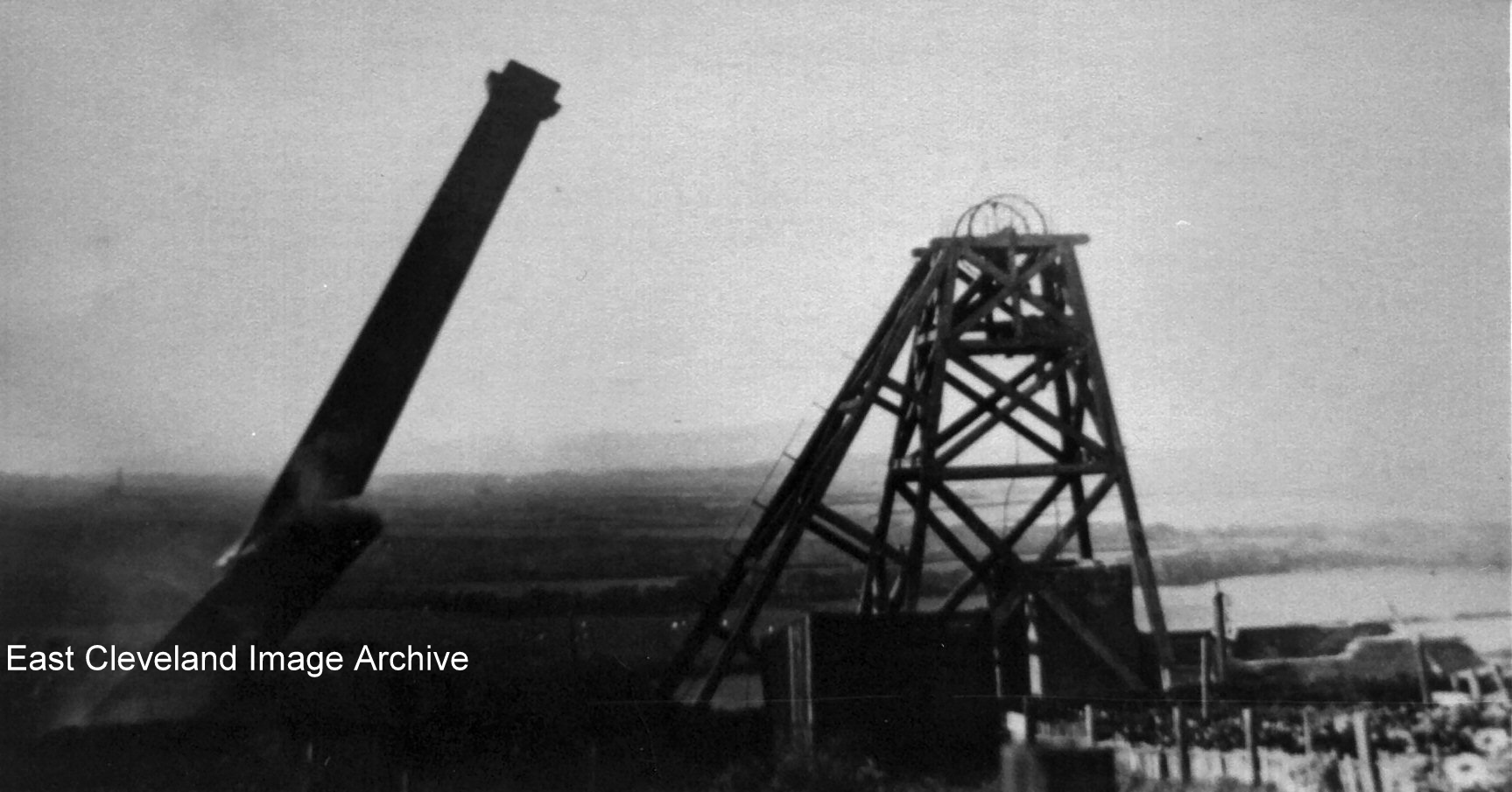
This one of a series of photographs which are now starting to appear of the dropping of the boiler house chimney, at Brotton Mine in 1921.
Image courtesy of several sources, thanks to Simon Chapman for the dating information.
|
|
||
 This one of a series of photographs which are now starting to appear of the dropping of the boiler house chimney, at Brotton Mine in 1921. Image courtesy of several sources, thanks to Simon Chapman for the dating information. 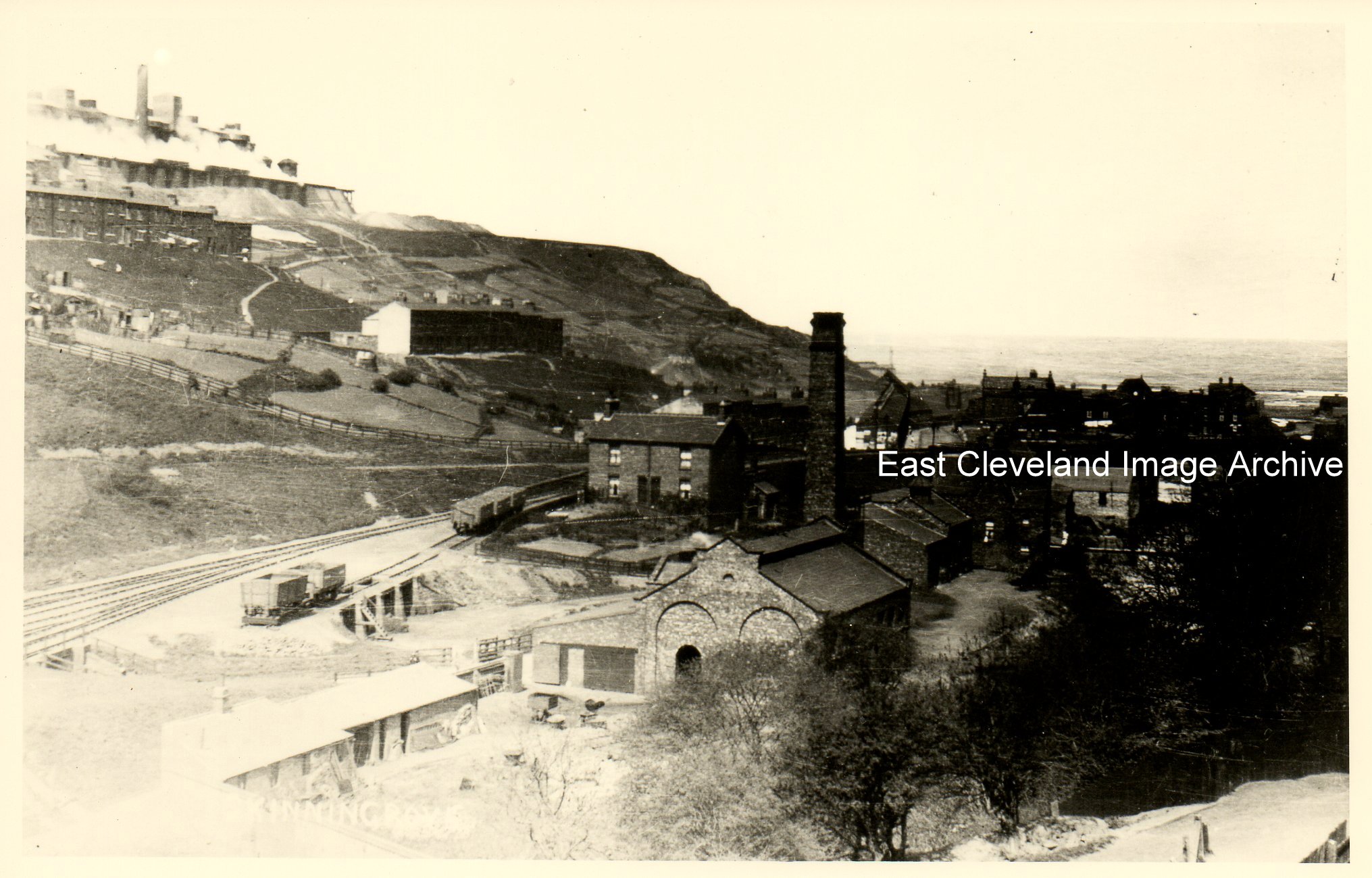 It’s a pretty poor title and time hasn’t been kind to the image either! Some nice architecture on display here, would that be the gas works in the foreground? Derick Pearson confirmed this fact, also advising: “If you look at the left side of the photograph you can just make out the tunnel that went under the railway. We used to walk under this on our way home from school. When it was wet weather it was often flooded. Traffic used to have to go through it in single file.” Image courtesy of the Pem Holliday Collection and others, thanks to Derick Pearson for that update. 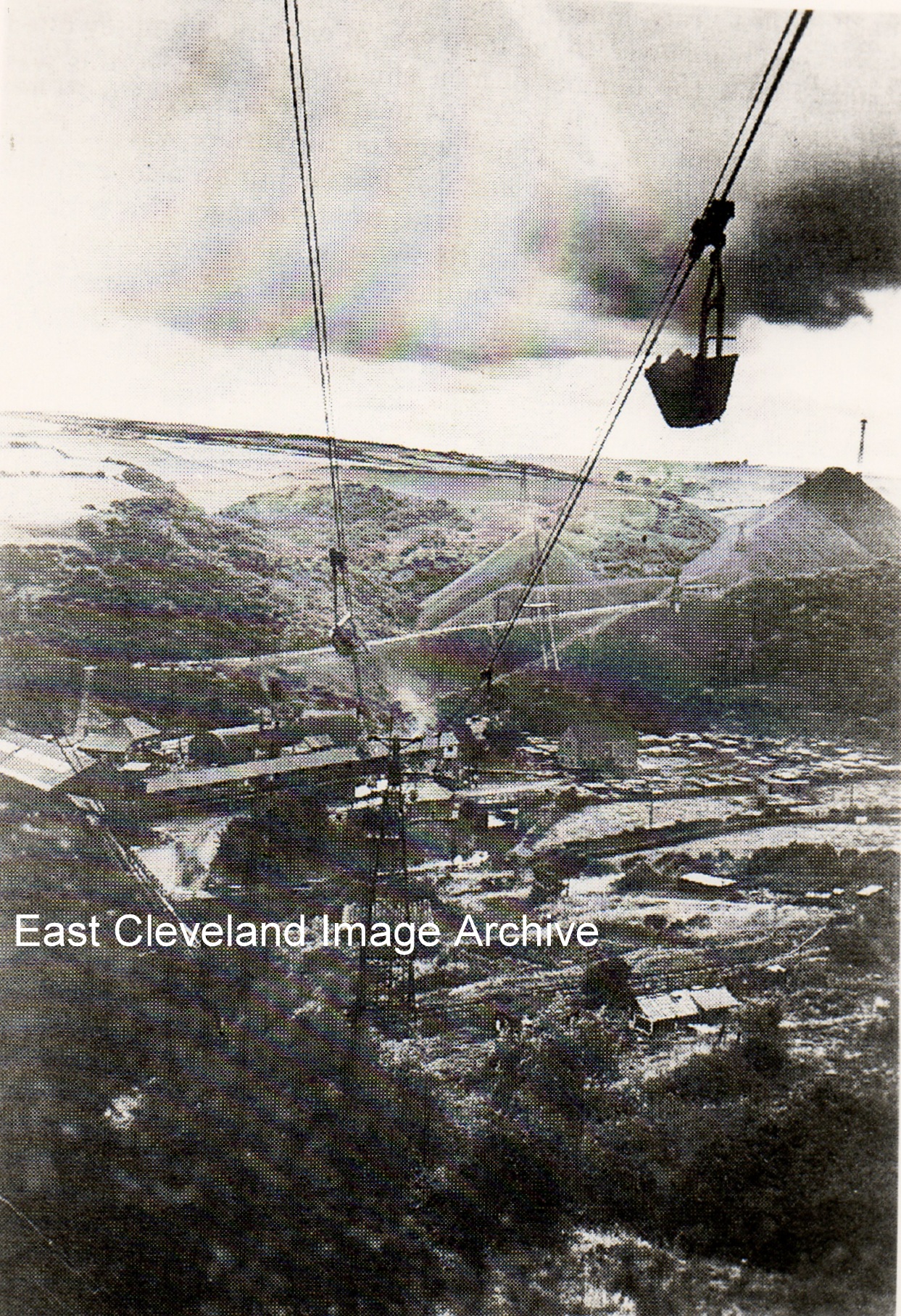 A working photograph of the aerial ropeway, locally known as ’the buckets’. We can see a full bucket of ironstone being taken up to the iron and steel works, with the mine in the distance at the bottom of the picture. Simon Chapman advised: “Loftus mines ironstone was transported up to Skinningrove Works from 1895 by connection into the abandoned workings of the North Loftus mine to avoid paying haulage charges to the N.E.R. By 1932 the North Loftus shaft steam winding equipment was thoroughly antiquated so the aerial ropeway was built to avoid using the shaft which was later filled in.” Image courtesy of the Pem Holliday Collection and others; thanks to Simon Chapman for information in the last paragraph. 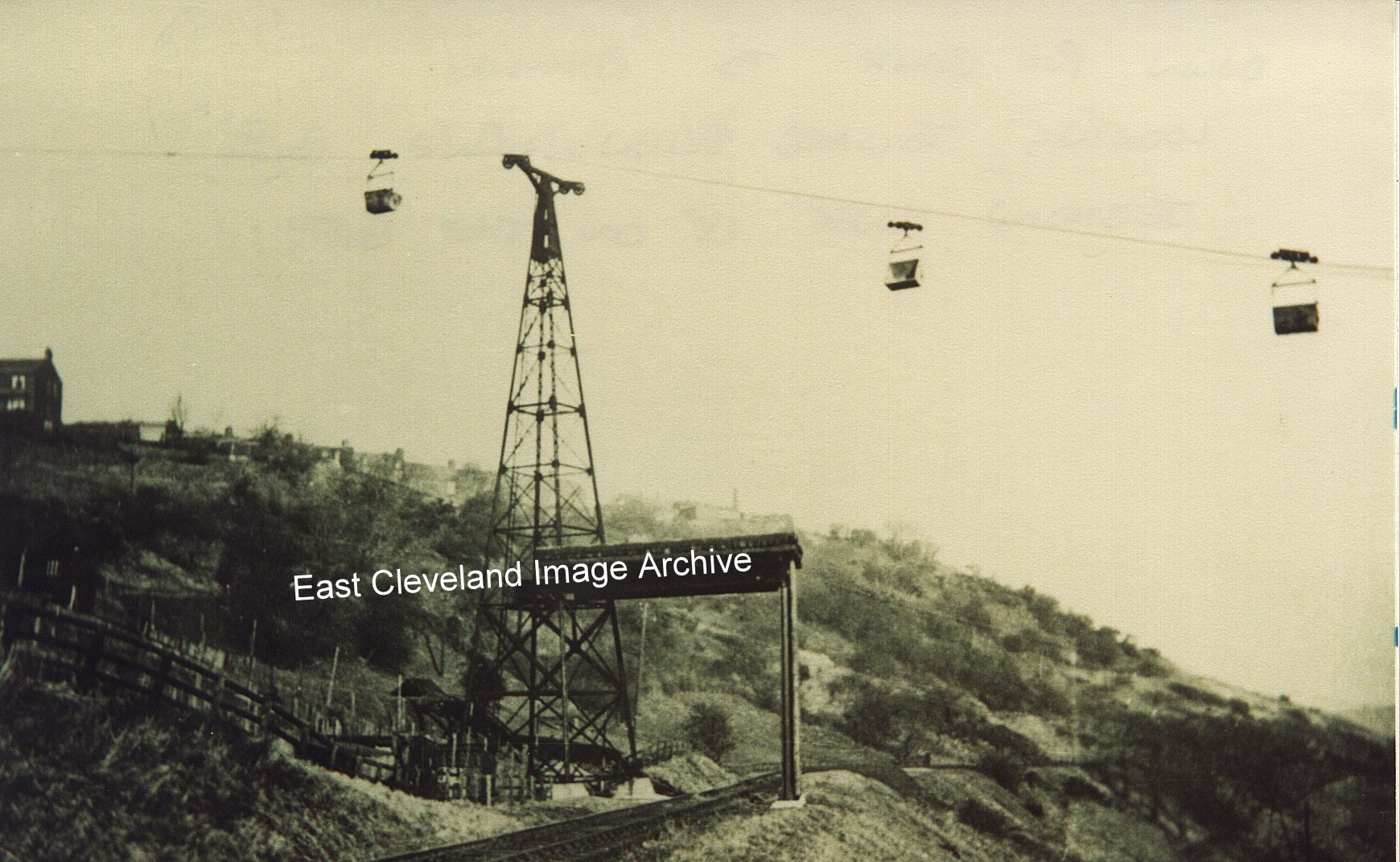 Loftus mines ironstone was transported originally transported from the Loftus (Skinningrove) mine up to Skinningrove Works via the zig-zag railway system along the valley side. From 1895 this transportation occurred via a connection into the abandoned workings of the North Loftus mine to avoid paying haulage charges to the N.E.R. By 1932 the North Loftus shaft steam winding equipment was thoroughly antiquated so the aerial ropeway was built to avoid using the shaft which was later filled in. An aerial ropeway (known locally as ”the buckets”) was constructed to take the stone from the valley floor up to Skinningrove Ironworks on the cliff top. This is the middle stanchion, the roofed structure over the zig-zag railway was to catch any falling stone jerked out of the buckets as a result of passing over the stanchion pulleys. This system was in use until local stone was superseded by cheaper foreign ores. (The topmost stanchion was still in place at the top gates of Skinningrove Iron and Steel Works when I worked there, adapted as a floodlight tower!). Image courtesy of the Pem Holliday Collection and others, thanks to Simon Chapman for the details of these changes in transportation. 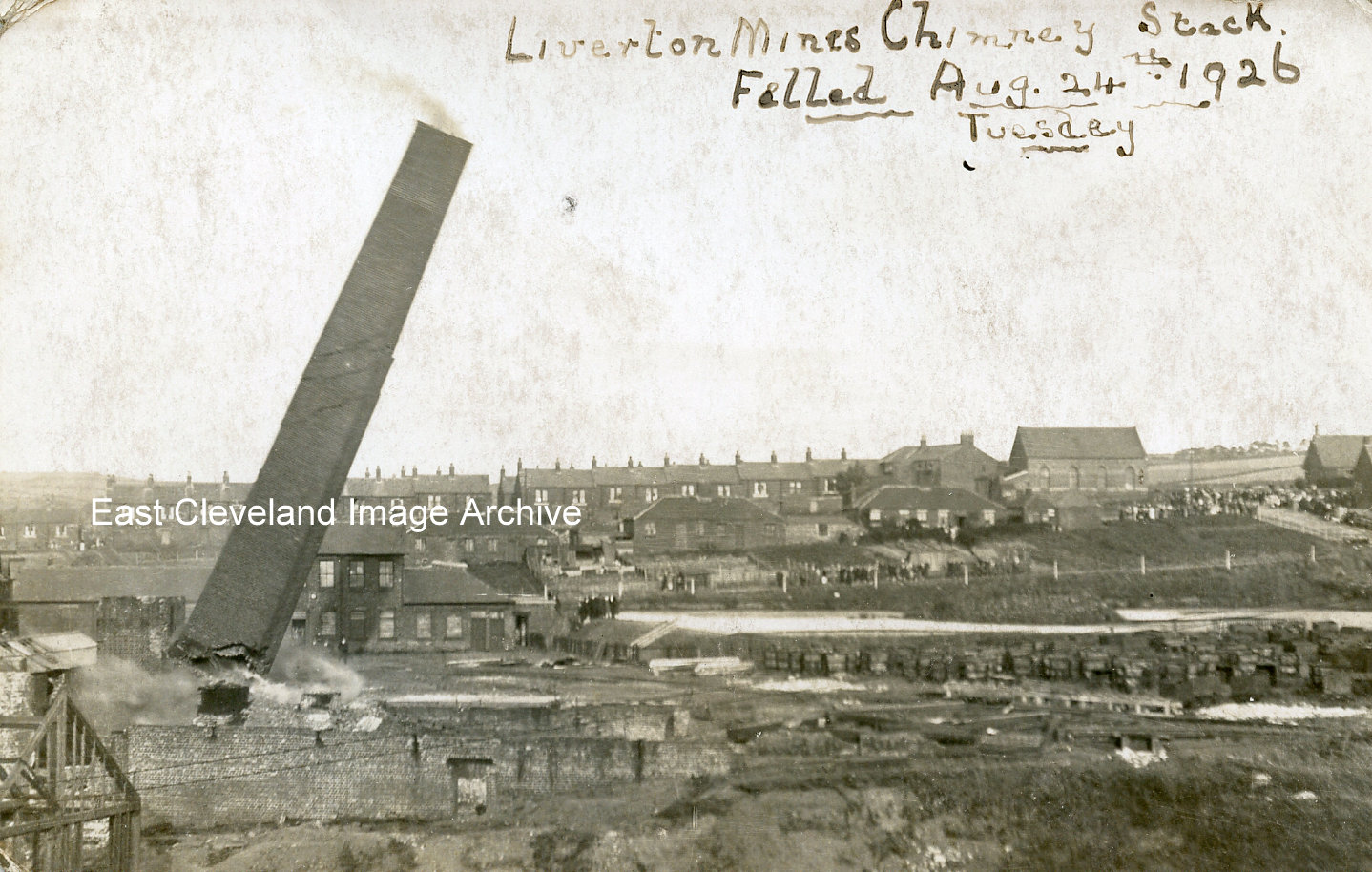 As the caption on the photograph says – Liverton Mines chimney stack felled on Tuesday 24th August 1926 – obviously a well attended event. Nowadays ‘elf and safety’ would have a field day!! Image courtesy of the David Linton Collection, the Pem Holliday Collection and others. 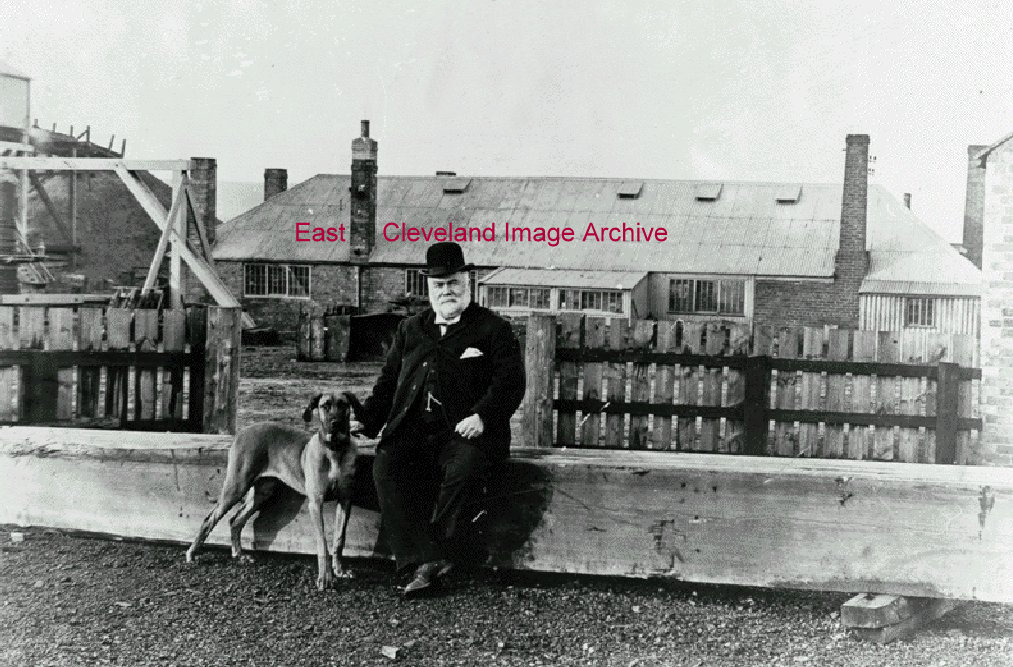 Nice dog with it’s owner, now known to be Thomas Ranson who was the Manager at North Skelton ironstone mine in the late 1800’s. Mr Ranson has often been wrongly identified as Mr Brown at North Skelton mine. The 1891 Census lists Thomas Ranson as Manager with his son Robert as a Deputy Overman, the whole Ranson family (ten in total) lived at numbers 1 and 2 Bolckow Street, North Skelton; by the 1901 and 1911 Census the family had moved to 1 Vaughan Street. Information courtesy of Eugenie Jarred. 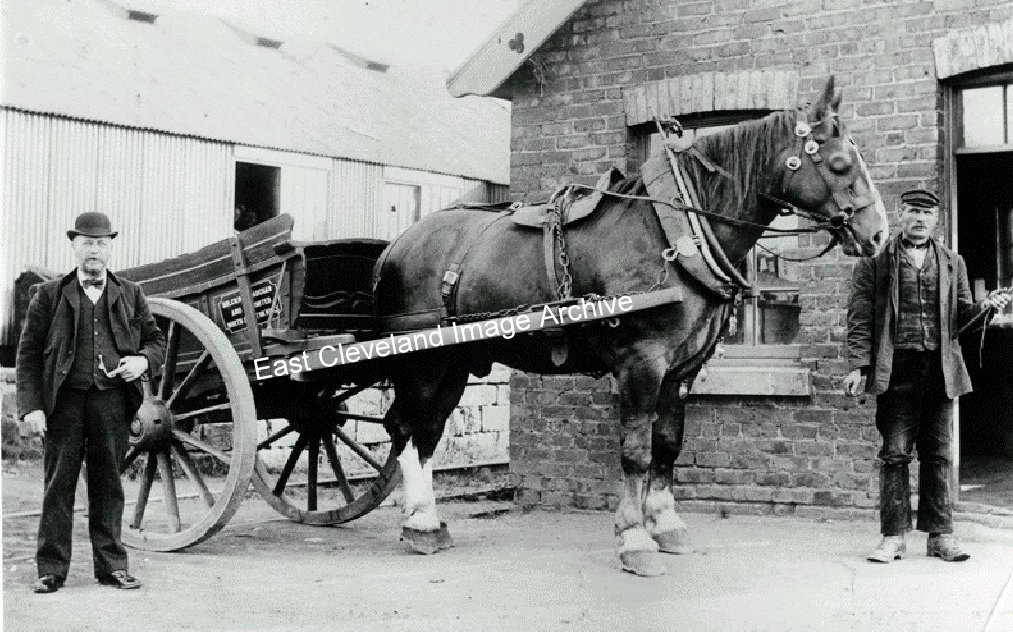 Originally titled ”Mr Brown North Skelton Mine” when this image arrived to the Archive, prompted the question: ”Who was Mr Brown?”. Neil Baldwin now tells us: ”Mr Brown was an engineer at North Skelton pit, he was my father-in-law’s great grandfather (along the Butler family side).” Image courtesy of several sources, thanks also to Neil Baldwin for resolving the query. 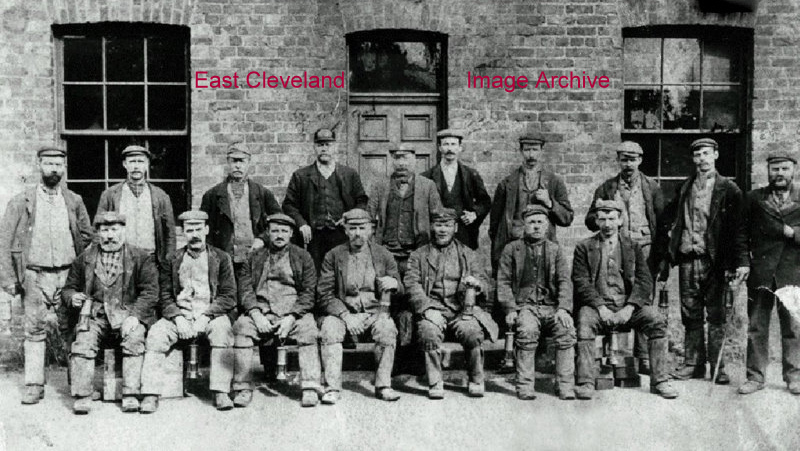 Now the Archive knows that these are some of the workmen from the mine (possibly one shift?); but what date would it be? Also can anybody provide any names? 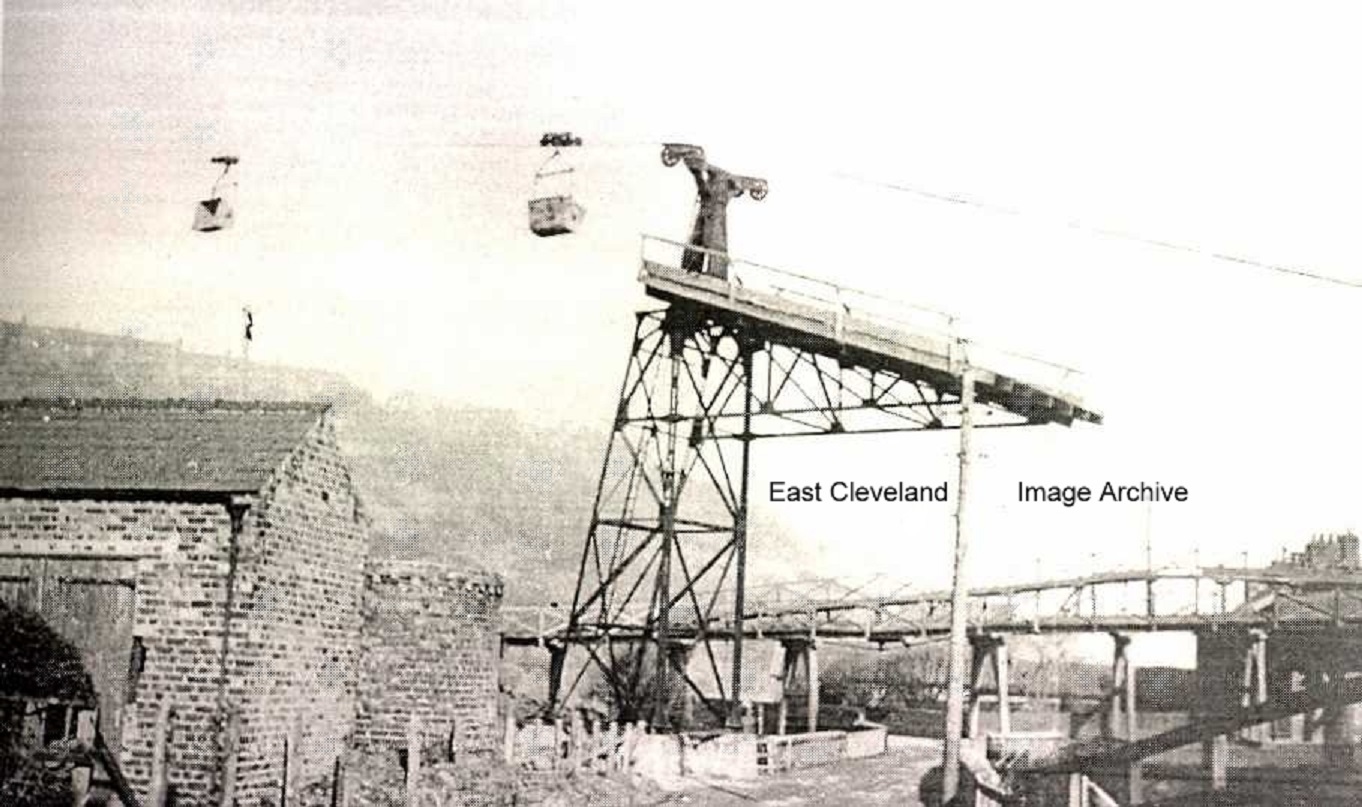 This is the sight you would have seen entering Skinningrove, from the Carlin How to Loftus road, dating from about 1937; Loftus mine was to the right and the ropeway took ironstone from the mine to the steel works on the top of the hill, on it’s return it brought shale which was tipped at the back of the mine. This ropeway was known locally as ’the buckets’. This is a view of the bottom pylon of ’The Buckets’ complete with protective screen above the road. Just to the left of the pylon can be seen the air shaft for the mine. This airshaft still can be seen today, beside the entrance to the footpath up to Carlin How. The row of houses on the extreme right of this image is that of Overman’s Cottages, colloquially known as ‘Hoss Muck Terrace”; owing to the proximity to the surface stables for the mine. Image courtesy of the Pem Holliday Collection, the David Linton Collection and others. 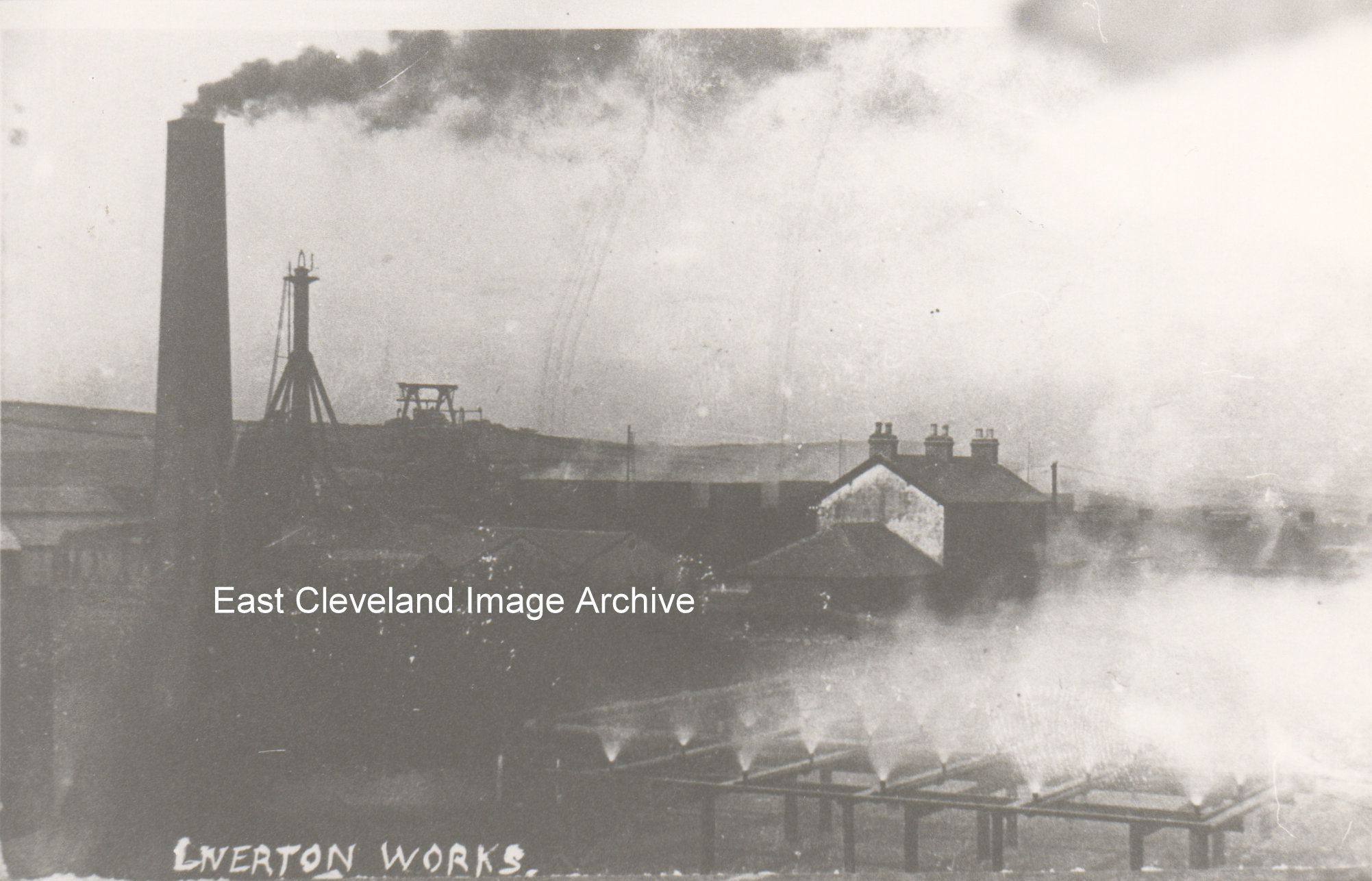 Liverton works, with the spray bars in the right-foreground, this was actually part of the Liverton ironstone mine. Graham Suggett asked: “My grandfather worked at the Liverton Mines pit until it closed, he was winding engine foreman. He lived at Graham Street (note my given name). He kept ducks on the reservoir. Presumably the reservoir fed the spray bars. Please, what were the spray bars used for?” Simon Chapman advised: ”The water spray in the reservoir did two things: it was the exhaust steam from the engines so it was condensed back to water which also warmed up the water in the reservoir before it was pumped into the boilers. This was part of an extensive modernisation scheme at the mine about 1903 to make the place more efficient” Graham also added: “How ingenious and energy conscious those miners were. My grandfather, Harry Brown, operated the hoist until the mine closed and he retired.” Image courtesy of the Pem Holliday Collection and others; also thanks to Graham Suggett and to Simon Chapman for the updates. |
||
Recent Comments